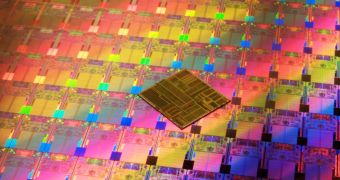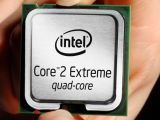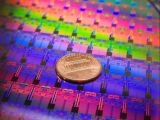Although everyone knew they were coming for quite some time now, Intel, the world's biggest chip manufacturer, has finally decided to unleash its latest "horde" of 16 processors (the Core 2 Extreme QX9650 quad core desktop processor and 15 dual-core and quad-core CPUs) the first to use the Hafnium-based high-k metal gate (Hi-k) formula for the transistors contained within them, not to mention the 45-nanometer (nm) manufacturing process, which further boosts performance and lowers power consumption.
Built using an entirely new transistor formula that alleviates the wasteful electricity leaks that threaten the pace of future computer innovation, these processors also eliminate eco-unfriendly lead and, in 2008, halogen materials. Furthermore, the new transistor technology will allow Intel to design products that are 25 percent smaller than previous versions and, thus, more cost-effective, as well as the ability next year to pursue new ultra mobile and consumer electronics "system on chip" opportunities. The new 45nm (a nanometer is 1 billionth of a meter) processors boast nearly twice the transistor density of previous chips built on the company's 65nm technology - that is up to 820 million transistors for quad-core processors, each using Intel's new formula.
The Intel Core 2 Extreme QX9650 quad core processor, the world's first 45nm Hi-k desktop processor sports certain important enhancements such as a larger L2 cache and support for new Intel SSE4 media instructions that help bring desktop performance to "extreme" new levels. New to the Intel line-up of server processors are 15 server dual-core and quad-core 45nm Hi-k Intel Xeon processors. The 12 new quad-core chips boast clock speeds ranging from 2GHz up to 3.20GHz, with front side bus speeds (FSB) up to 1600MHz and cache sizes of 12MB. The three new dual-core chips feature clock speeds of up to 3.40GHz, an FSB of up to 1600MHz and cache sizes of 6MB.
The 45nm Hi-k Intel Xeon processors are compatible with server platforms using the Intel 5000 chipset family. In addition, Intel is launching three platform solutions to support 45nm processors, including here the Intel 5400 chipset-based platform (previously codenamed "Stoakley") that is optimized for high-bandwidth applications such as high-performance computing (HPC), the Intel 5100 Memory Controller Hub chipset and Intel ICH-9R I/O controller (previously codenamed "Cranberry Lake"), which are cost-optimized solutions that support either one or two processors and also provide reduced power consumption using native DDR2 memory, as well as the Intel 3200 chipset-based platform (previously codenamed "Garlow") that is specifically designed for single-processor entry servers. Furthermore, Intel's 45nm Hi-k Xeon processors also extend performance-per-watt characteristics by delivering an improvement of 38 percent over its previous-generation Quad-Core Xeon 5300 Series processors.
The move from 65nm to 45nm involves more than just a shrink of current chip designs. The processors also include such additional features as new Intel Streaming SIMD Extensions 4 (SSE4), which are 47 new instructions that speed up workloads including video encoding for high-definition and photo manipulation, as well as key HPC and enterprise applications. Furthermore, they come packed with enhanced Intel Virtualization Technology, as the virtual machine transition (entry/exit) times are improved by an average of 25 to 75 percent through hardware with no changes to software required.
Other additional features include a fast divider that roughly doubles the speed over previous generations for computations used in nearly all applications through a technique called Radix 16, a wider 128-bit shuffle unit that improves the performance for SSE-related instructions that have shuffle-like operations. This feature will increase performance for content creation, imaging, video and high-performance computing.
"The intellects, physics and designs that went into solving one of the industry's most daunting challenges are awe-inspiring and I congratulate the Intel teams for this breakthrough achievement," said Paul Otellini, Intel president and CEO. "Best yet, this feat, coupled with our industry-leading architectures, means faster and sleeker computers, longer battery life and better energy efficiency. Our objective is to bring consumers a new class of computers delivering a full Internet experience in ever-smaller, more portable form factors."
Pricing of the 45nm Hi-k Intel Xeon processors depends on the model, speeds, features and amount ordered and ranges from $177 to $1,279 in quantities of 1,000. The 45nm Hi-k Intel Core 2 Extreme QX9650 quad core processor is priced at $999 in quantities of 1,000.

 14 DAY TRIAL //
14 DAY TRIAL // 

